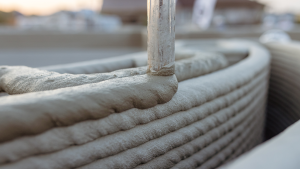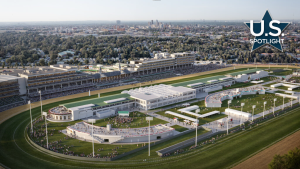The entities that make up Detroit Public Broadcasting are consolidating and moving into a relatively dormant district that is seeing signs of renewal.
They include the popular Channel 56 PBS television station, seen on cable channels across Canada, classical and jazz radio station WRCJ, and TV journalism production, scattered at one suburban site and two in Detroit.
The suburban site in Wixom, more than 20 miles outside the city in exurbia, houses PBS’s corporate offices. WRCJ is based near downtown in the Detroit School of Arts and the journalism hub is in Marygrove College, also in Detroit.
The move also brings the TV station back to Detroit, which it abandoned two decades ago for a larger facility that had digital broadcasting equipment, then a new FCC requirement.
The location is in the Milwaukee Junction neighborhood, an area of abandoned industrial buildings and open lots but also home to the original Ford Model T plant — now a museum — diagonally across the street.
The broadcaster changed its name to Detroit PBS and bought the entire block immediately southwest. Onsite are a couple of one-storey buildings. The largest of these used to house what’s believed to have been General Motors’ engineering offices.
Eric Freeland, the station’s spokesperson, said the $11 million cost of the site and new development will be paid for from the sale of the Wixom property and ongoing fundraising.
Freeland said the investment will help revitalize the area along with other unnamed developments by “a series of other organizations.”
Also nearby, Henry Ford Health is investing $3 billion in a sprawling new campus in partnership with Michigan State University and the Detroit Pistons NBA franchise.
Meanwhile the adjacent and long established New Center area, home to the hospital as well as the former General Motors HQ — now state government offices — is seeing a commercial renaissance with new stores and restaurants.
Freeland said that was part of the impetus to move to the area, which will help connect the dots. Another is simply the station’s locus is more in the city.
“Our work brings us to Detroit quite frequently. It’s really at the heart of our coverage area and the audience and community that we serve,” he said.
The smaller of the block’s two buildings will likely be torn down for a parking lot. But the larger one-storey brick structure will be adaptively reused with its façade kept intact.
“It’s a little bit more than a hundred years old and it does have some local history,” Freeland said.
The architect is Detroit’s Hamilton Anderson Associates, one of the city’s highest profile firms that designed Little Caesars Arena, MGM Grand Detroit casino, the Motown Museum expansion and the Hudson’s site 49-storey skyscraper, just topped-off in April.
The contractor is Detroit-based Broder Sachse.
Freeland said 5,000 to 10,000 square feet will be added.
Final architectural details are still being worked out. But artist renderings show an exterior awning on Piquette Avenue.
Inside, the building will be large enough for 100 staff, housing offices, seven production radio and TV studios as well as an indoor 300 seat performance space and adaptable outdoor concert site in what has been described as a “community media campus.”
“We were looking to have a space where we can have jazz and classical concerts, where they could either perform inside our studios or we could hold them outside in this atrium,” Freeland said.
Construction is expected to begin late this year and be completed by fall 2026.











Recent Comments
comments for this post are closed